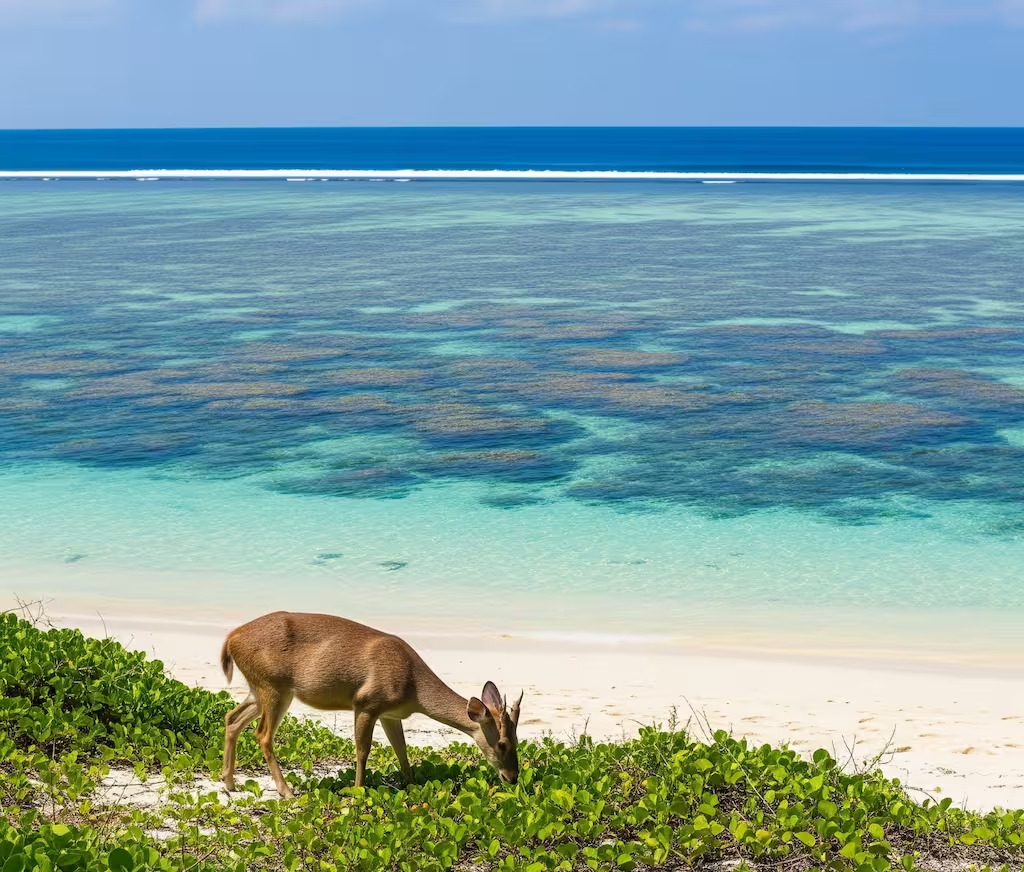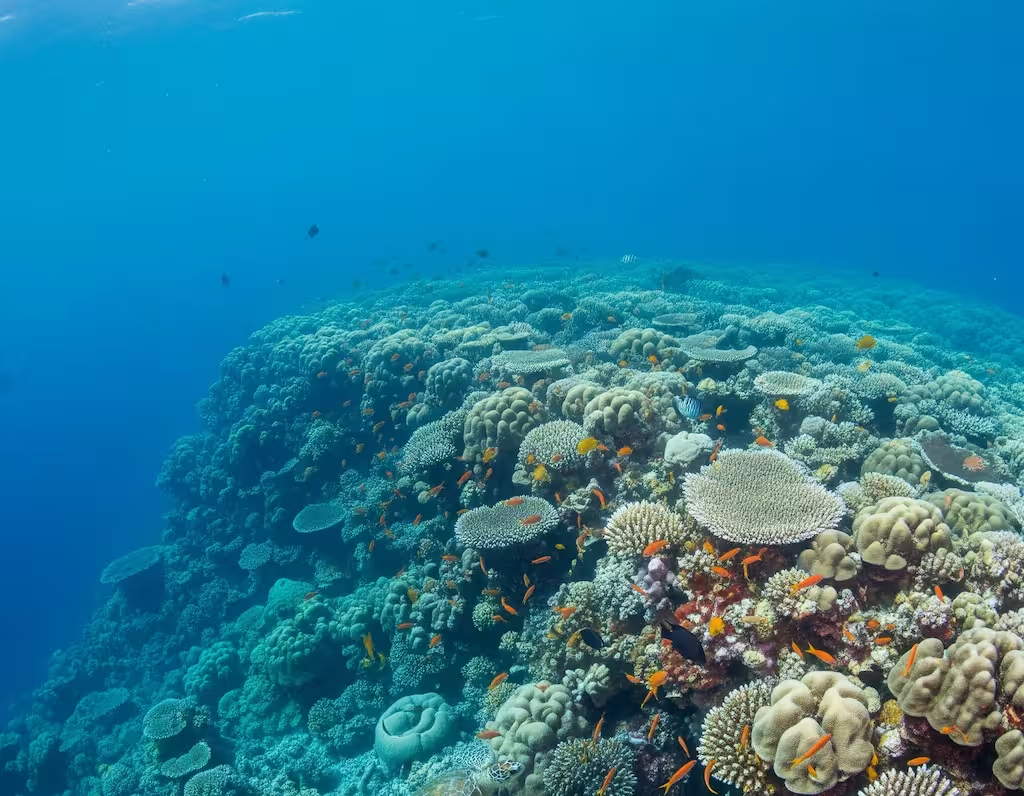Scuba diving at Menjangan Island. What you need to know

If you’re anything like me, you’re always on the lookout for those special places that offer incredible underwater experiences without the hustle and bustle. And let me tell you, Menjangan Island in Bali is exactly that kind of hidden gem. While it might sometimes get overshadowed by more popular southern dive spots, that’s actually a good thing! This “secrecy” has allowed its stunning corals to flourish, giving you the chance to explore some of Bali’s best wall diving without the crowds.
Why Menjangan’s Diving is So Good
So, what makes diving at Pulau Menjangan so special? It’s located pretty far from the busy areas of Kuta and Seminyak, meaning you’ll find a much calmer atmosphere here. The island’s protected status is a huge factor too, as it’s part of the West Bali National Park—one of Indonesia’s oldest national parks, established in 1917 and officially designated in 1941. This protection limits daily visitor numbers, leading to quieter dive sites and thriving reefs.
Menjangan’s reefs are famous for their complex coral formations, boasting a rainbow of soft corals, barrel sponges, and sea fans. In fact, it has the highest concentration of gorgonians in Bali, many of which are home to tiny pygmy seahorses. While Bali’s diving focus may have shifted south, Menjangan still proudly holds the title of Bali’s best wall diving, with shallow coral gardens that drop off steeply. You’ll typically find crystal-clear waters here, often with visibility ranging from 15 to 50 meters, sometimes even more than 50 meters, especially from October to November. Plus, the water is wonderfully warm, averaging around 29°C.
Top Dive Sites You Can’t Miss
Menjangan Island is surrounded by numerous dive sites, each offering unique experiences. Here are some of the best:
- Eel Garden: Located off the western tip of Menjangan, this is a must-dive site. It starts with a colorful reef top that drops away into a lovely wall, decorated with magnificent gorgonians where you might spot pygmy seahorses. As the wall ends, you’ll find a sandy slope carpeted by masked garden eels. In deeper sections, mild currents can attract bigger fish like tuna, wahoo, schooling jacks, barracuda, Napoleon wrasse, and giant trevally. The shallow coral garden is perfect for finding critters like leaf scorpionfish, nudibranchs, and octopus.
- Anchor Wreck (Kapal Budak): Named for a large anchor embedded in the shallow reef, this site features the remains of what’s thought to be a 19th-century Balinese boat. While the wreck itself is deep and broken up, the main attraction is the impressive wall looming over it. This wall is incredibly biodiverse, with cracks and crevices hiding macro subjects like nudibranchs, and huge sponges and sea whips providing cover for a variety of reef fish. It’s also a good spot to see reef sharks.
- POS II: An iconic wall dive located on the southeast tip, accessible by both boat and shore. You can drift along a beautiful wall adorned with an abundance of soft corals, sponges, and sea fans. Nutrient-rich upwellings sometimes bring pelagics like turtles, reef sharks, eagle rays, and even manta rays.
- Sandy Slope: A great site for divers of all experience levels, located on Menjangan’s north side. It features a white sandy slope with patches of thriving hard and soft coral. Keep an eye out for critters like nudibranchs, pipefish, squat lobsters, frogfish, and crocodile fish, as well as larger species like reef sharks, Napoleons, and schools of jacks, tuna, mackerel, and barracuda.
- Bat Cave and Temple Wall: These two sites on the eastern edge can often be combined into a single drift dive. Temple Wall starts beneath a towering Ganesha statue, featuring a sheer wall with healthy sea fans and corals where you might find pygmy seahorses, orangutan crabs, and squat lobsters. Bat Cave, further south, is marked by shallow caves filled with resting bats, and its wall offers shelter for a range of fish species including anthias, bannerfish, and angelfish, plus schools of tuna, jacks, pompano, fusiliers, and both blacktip and whitetip reef sharks.
- Coral Garden: Often mentioned as a popular site along with Eel Garden and Pos II, known for its beautiful corals.
What You’ll See Underwater
Menjangan is truly a paradise for marine life enthusiasts. The island’s underwater environment supports a stunning array of creatures. You’ll frequently encounter:
- Colorful Corals: Expect to see complex coral formations, vibrant soft corals, barrel sponges, and an incredible concentration of gorgonian sea fans, many of which hide the tiny Denise pygmy seahorse.
- Reef Fish: Dive sites are bustling with clownfish, lionfish, batfish, bannerfish, angelfish, anthias, chromis, gobies, scorpionfish, triggerfish, fusiliers, and pufferfish. You might also spot garden and sand eels, green moray eels, and razorfish.
- Macro Life: Menjangan is a dream for macro photographers! Look closely for nudibranchs (like Leopard, Pyjama, Dusky Nembrotha, Eyed Phyllid, Spotted Hypselodoris, Desirable Flabellina), anemone shrimp, squat lobsters, pipefish, frogfish, crocodile fish, and stonefish.
- Larger Species: While massive pelagics are rare due to the protected calm waters, you can still see sea turtles, whitetip and blacktip reef sharks, tuna, jackfish, barracuda, wahoo, Napoleon wrasse, and eagle rays. Keep an eye out for surprise appearances by manta rays at POS II.
Exploring Menjangan Island (Above Water)
Your Menjangan experience isn’t just about what’s beneath the waves! During your surface intervals, you can explore the island’s unique terrestrial features:
- White Sand Beaches: Menjangan boasts pristine white sand beaches and turquoise waters.
- Volcano Views: Enjoy breathtaking views of the volcanoes from East Java, especially Mount Ijen.
- Menjangan Deer: The island’s name means “island of the deer” in Indonesian, and you can often spot these gentle animals grazing on the beaches or cliffs.
- Balinese Temple: Discover the intricately carved white Ganesh temple (Pura Segara Giri Dharma Kecana temple), which adds a spiritual dimension to the island.

Considerations for Choosing a Dive Center.
Planning Your Menjangan Dive Trip
Getting to Menjangan requires a bit of planning, but it’s totally worth it for the incredible diving!
- Getting There: Most dive trips to Menjangan start from Pemuteran, the closest village to the island. Pemuteran is about a 4 to 5-hour drive from Denpasar International Airport. From Pemuteran, it’s typically a 15 to 30-minute boat ride to Menjangan Island’s dive sites.
- Driving Routes: You can take the scenic road through Bedugul (known for cool climate and lakes, about 4 hours from Ubud) but be aware it’s at a high altitude (1,500m) and should be avoided immediately after diving to prevent decompression sickness. Alternatively, the northern coastal road via Singaraja and Lovina (4 hours from Amed) is suitable if you need to drive right after diving.
- Best Time to Dive: While Menjangan can be dived year-round due to its protected status and sheltered sites, the optimal months are from April to November during Bali’s dry season. October to November often offers the best visibility.
- Staying Overnight vs. Day Trip: It’s highly recommended to stay at least one night in Pemuteran. This makes the trip less rushed, more cost-effective, and helps avoid long-distance travel complications or decompression issues from high-altitude driving right after diving. Day trips from South Bali are possible but can be very long (12-14 hours).
- National Park Fees: There is a daily entrance fee to West Bali National Park of 200,000 IDR on regular days and 300,000 IDR on Sundays and public holidays. This fee is generally included in the price of your dives by the dive center.
- Dive Centers: Pemuteran is home to several reputable dive centers. Dive Concepts Pemuteran is a solid choice, conveniently located within the Hotel Arjuna. Other highly-rated options include Abyss Ocean World, Blue Corner Dive, and Mimpi Resort Menjangan (a PADI 5-Star Resort). Many offer PADI and SSI courses.
- Accommodation in Pemuteran: Pemuteran offers a range of lodging from budget homestays to luxury resorts. It’s a quiet, laid-back village with various restaurants. Arjuna Homestay (co-located with Dive Concepts) is a great option for divers, offering comfortable rooms and a pool. For a luxury experience, consider NusaBay Menjangan Resort, located right inside the West Bali National Park.
- Diving in Pemuteran: While Menjangan is all about walls and clear water, Pemuteran Bay offers a different experience known for muck diving. Sites like Secret Bay, Puri Jati, Biorock, and Macro Jetty are fantastic for spotting tiny, unique creatures.
Menjangan Island is truly an underrated gem for diving in Bali. Its pristine protected reefs, abundant marine life, and calm, uncrowded sites offer an unforgettable experience for divers of all levels. So, if you’re looking for a tranquil escape with spectacular underwater scenery, Menjangan should definitely be on your Bali dive itinerary!